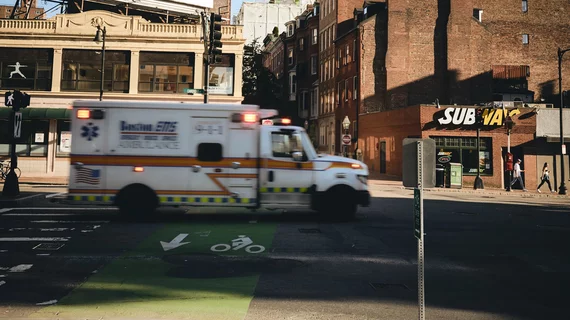How to provide emergency cardiovascular care, including CPR, for children with COVID-19
Though the new coronavirus is often associated with older patients and those with preexisting conditions, it has been diagnosed in young children as well. The American Heart Association (AHA) and American Academy of Pediatrics have now shared recommendations for providing emergency cardiovascular care, including CPR, to pediatrics patients with known or suspected COVID-19.
The interim guidance, available here, contains information from the CDC; providers outside of the United States should seek up-to-date recommendations from the World Health Organization or other local resources. Many of the recommendations are similar to the AHA’s guidance on emergency cardiovascular care for adult patients with known or suspected COVID-19, which was issued back in March.
“The American Heart Association understands the difficulty in caring for pediatric patients during this challenging time, especially when resuscitation is needed,” Comilla Sasson, MD, PhD, a practicing emergency room physician and the AHA’s vice president for emergency cardiovascular care science and innovation, said in a statement. “Together with the American Academy of Pediatrics, we are doing everything we can to make it easier by offering guidance to minimize the spread of COVID-19.”
According to the guidance, all aerosol-generating procedures are to be performed in airborne infection isolation rooms (AIIRs) with respiratory protection being worn at all times. AIIRs are to be reserved for such patients, and only essential team members should be present. Recommended personal protective equipment (PPE) include N95 respirators “or respirators that offer a higher level of protection” than facemasks, gloves, gowns, and eye protection.
“If there are shortages of gowns, they should be prioritized for aerosol-generating procedures, care activities where splashes and sprays are anticipated, and high-contact patient care activities that provide opportunities for transfer of pathogens to the hands and clothing of providers,” according to the guidance.
In addition, “rapid sequence intubation with appropriate PPE” is to be used if intubation is needed for any pediatric patients with known or suspected COVID-19. Procedures that generate aerosols are to be avoided when possible.
Information for emergency care providers and first responders is also included in the guidance. Dispatchers should determine if any calls concern children who may have signs or symptoms of the virus, but such questions “should never supersede the provision of prearrival instructions to the caller when immediate lifesaving interventions are indicated.” Facilities should also be notified in advance when they will be receiving patients with known or suspected COVID-19.
When EMS clinicians arrive on any scene, according to the guidance, appropriate PPE should be put on before even entering the scene. And patients should “be separated from other people as much as possible” during any transportation, and ambulances must be completely cleaned after the patient arrives to his or her destination.

